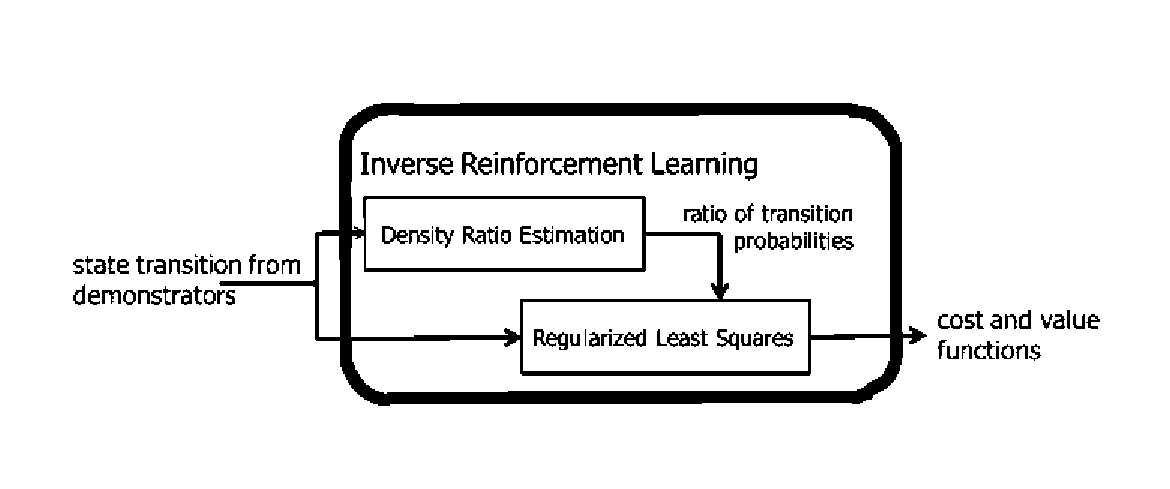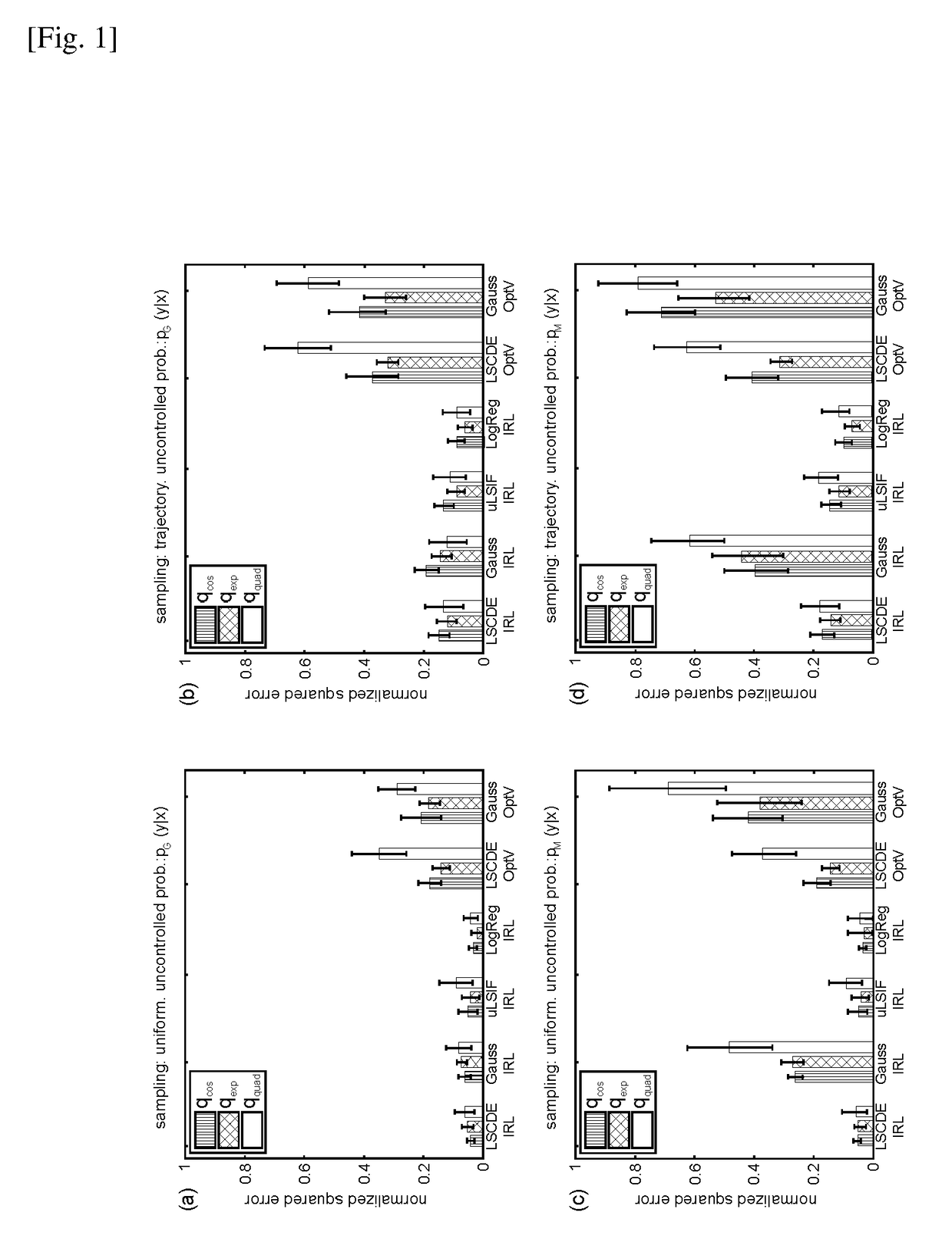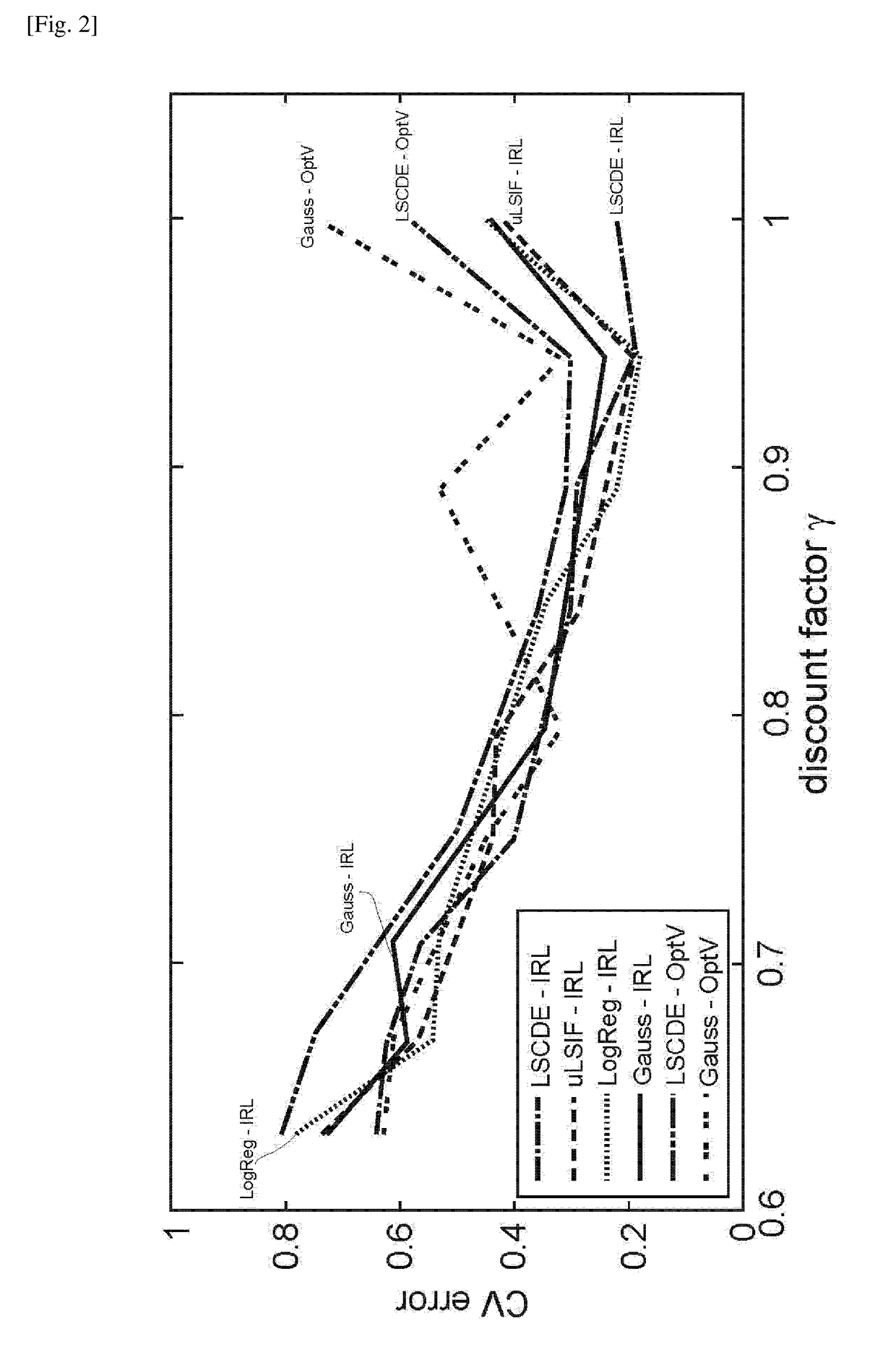Inverse reinforcement learning by density ratio estimation
a density ratio and learning technology, applied in the field of inverse reinforcement learning, can solve the problems of difficult to find an optimal policy, require the entire trajectory data, and process is usually very time-consuming, and achieve the effect of effectively and efficiently performing inverse reinforcement learning
- Summary
- Abstract
- Description
- Claims
- Application Information
AI Technical Summary
Benefits of technology
Problems solved by technology
Method used
Image
Examples
Embodiment Construction
[0057]The present disclosure provides a novel inverse reinforcement learning method and system based on density ratio estimation under the framework of Linearly solvable Markov Decision Process (LMDP). In LMDP, the logarithm of the ratio between the controlled and uncontrolled state transition densities is represented by the state-dependent cost and value functions. In one aspect of the present invention, density ratio estimation methods are used to estimate the transition density ratio, and the least squares method with regularization is used to estimate the state-dependent cost and value functions that satisfy the relation. This method can avoid computing the integral such as evaluating the partition function. As described below, a simple numerical simulation of a pendulum swing-up was performed, and its superiority over conventional methods have been demonstrated. The present inventors further apply the method to humans behaviors in performing a pole balancing task and show that ...
PUM
 Login to View More
Login to View More Abstract
Description
Claims
Application Information
 Login to View More
Login to View More - R&D
- Intellectual Property
- Life Sciences
- Materials
- Tech Scout
- Unparalleled Data Quality
- Higher Quality Content
- 60% Fewer Hallucinations
Browse by: Latest US Patents, China's latest patents, Technical Efficacy Thesaurus, Application Domain, Technology Topic, Popular Technical Reports.
© 2025 PatSnap. All rights reserved.Legal|Privacy policy|Modern Slavery Act Transparency Statement|Sitemap|About US| Contact US: help@patsnap.com



